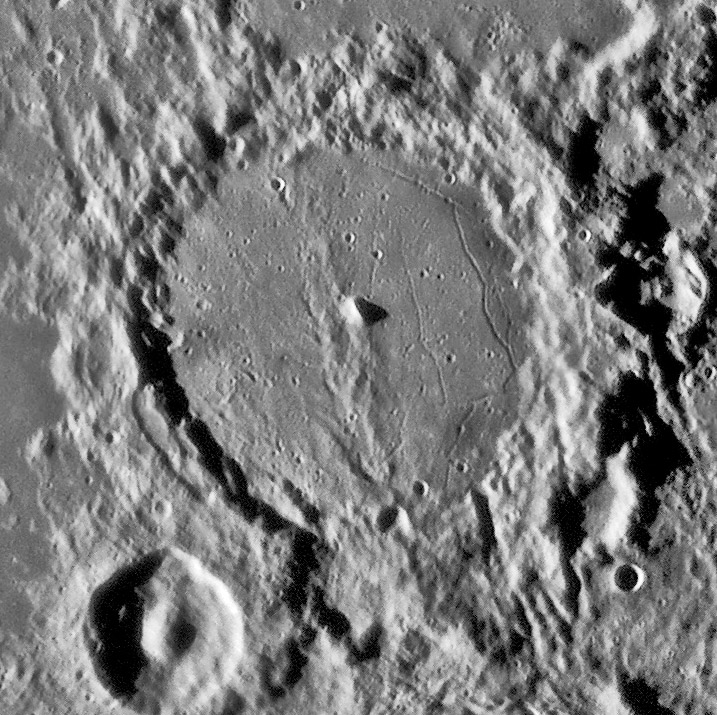
image by Paolo R. Lazzarotti
There are two communities of Moon lovers. One is made up of amateur astronomers who delight in visual observing and digitial imaging of the lunar surface. The second is the professional astronomer or geologist who hardly looks at the Moon personally, but studies spacecraft and telescopic image and non-image data. The professional astronomers have little awareness of the successes of the amateurs in imaging, and the amateurs tend to be uninformed of discoveries and understanding by those who are paid to study the Moon. LPOD helps bridge the gap between those communities by tying the unbelievably good amateur images - like this of Alphonsus by Paolo - with modern professional understanding. Amateurs who would like to read what planetary scientists have learned about features on the Moon may want to check the new Lunar Surface Bibliography (LSB) that has just been added to LPOD. As an example, if you are entranced by this image of Alphonsus and want to learn more about this fascinating crater you will find the following references in the LSB:
Alphonsus: Coombs, CR & 4 others (1990) The Alphonsus region: A geologic and remote-sensing perspective. Proc. 20th Lunar Planet. Sci. Conf., 161-174.online
Alphonsus Dark Halo Craters: Head, JW & L Wilson (1979) Alphonsus-type dark-halo craters: Morphology, morphometry and eruption conditions. Proc. Lunar Planet. Sci. Conf. 10th, 2861-2897. online
Alphonsus Eruption?: Doel, RE (1996) The Lunar Volcanism Controversy. Sky & Telescope (October) 26-30.
Two of these papers are online for free at the NASA ADS site and the third is available at the S&T online archive for a fee.
Technical Details:
25 September 2005, Gladio 315 Lazzarotti telescope (f/25), Lumenera Infinity 2-1M camera, Edmund Optics G filter IR blocked, 50-90 frames stack out of 1500. The LPOD image is just a piece of a glorious mosaic.
Related Links:
Rükl plate 44
Paolo’s website
Yesterday's LPOD: Flying Over Tycho
Tomorrow's LPOD: Scene in a New Light
COMMENTS?
Register, Log in, and join in the comments.



